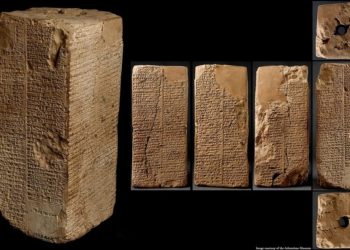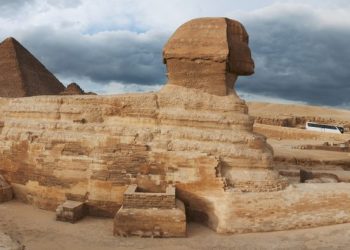Why Pyramids and why the pyramidal shape? There are countless pyramids scattered across the globe built across thousands of years by different cultures which were allegedly never in contact with each other.
Despite this, some of these cultures created intricately similar pyramids. But in addition to their design, is it possible that their use was also the same? And what were pyramids used for in the first place?
Were they tombs as Egyptologists argue? Were they mere temples were people would gather around for different ceremonies? Or were they no more than cenotaphs?
But what if pyramids were more than just that, and what if there was a higher, greater purpose in pyramids? One that we are yet to discover?
Did ancient civilizations really just build pyramids randomly, without purpose? Or were ancient civilizations aware of the importance of this particular shape, thousands of years ago?
It has been argued that pyramids are energetic shapes. They are powerful shapes. The shape of a pyramid is special, and there have been many claims that suggest how pyramids, just as humans, for example, resonate energy. Just as a guitar resonates sound, the pyramids can resonate energy.

But for mainstream scholars, this is no more than pseudoscience. For them, pyramids are either tombs or temples and were more special than any other ancient structure.
But pyramids are not your ordinary structure no matter how much people push for their simplicity. Pyramids, for example, are said to preserve food from decay. It is argued that food that is left inside a pyramid is longer preserved. Plants appear to grow faster inside a pyramid than outside it.
But are those characteristics just wishful thinking? Are these pyramidal characteristics no more than our desire for the pyramids to be more special than what they already are? Maybe we are just looking for a higher purpose in pyramids, one that’s not there? What if pyramids really are just a pile of rocks stacked up one another?
It’s hard to believe that’s the case.
After all, ancient civilization went through a lot of trouble to construct pyramids.
The Great Pyramid of Giza
Take the Great Pyramid of Giza as an example.
It is one of the most sophisticated pyramids ever built by human hands. The Great Pyramid of Giza is the pyramid of pyramids, the alpha, and omega of pyramids. The completion of the Great Pyramid of Giza marked the peak of the ancient Egyptian Pyramid building.
The project involved in building the Great Pyramid was of a never-before-seen scale. Never in Egypt, since around 2,700 BC was such a massive construction project been attempted. It was simply astounding both in terms of complexity and realization. Everything had to work out flawlessly.
The pyramid was planned and designed. The builders made sure to use the best available materials for the construction, a sign that they wanted the structure to remain standing for time to come.
But good materials were not the only thing that would make the pyramid stand the test of time.
The pyramids design and planning had to be perfect.
And the ancient Egyptians achieved perfection.
Eventually, to complete the Great Pyramid of Giza, the ancient Egyptians would quarry, transport and place into position more than 2.3 million blocks of stone. For 3,800 years after it was completed, it remained the tallest building in the world.
The builders constructed a pyramid with a total volume of 2,583,283 cubic meters (91,227,778 cu ft). Egyptologists estimate that 5.5 million tons of limestone, 8,000 tons of granite (from Aswan) and more than 500,000 tons of mortar were used to build the Great Pyramid in circa 20 years.
Was all of this done just to build a tomb?
The ancient Egyptians had been building mastaba tombs for thousands of years. Why deviate from their original plan, and suddenly build pyramids?
Yes, the Pyramid shape suddenly appeared during the reign of Pharaoh Djoser.
The Great Pyramid as a tomb is controversial, to say the least. If it really were a tomb, there are several questions we need an answer to: Where’s the capstone of the Great Pyramid? It was surely massive so it could not just have disappeared. Why is there a total absence of soot marks from torches? Why isn’t the pyramid’s interior covered in hieroglyphics, depictions of the afterlife, and images of the pharaoh?
These are just some of the questions that remain unanswered but are part of an even bigger list of mysteries surrounding the pyramid.
Hundreds of pyramids were built in Egypt. The biggest one at Giza and there are no written records whatsoever that tell us how, why or when it was done?
The ancient Egyptians supposedly ventured into the largest building project attempted in history and decided not to write down anything about it. That’s incredible strange from a historic point of view since the Egyptians were excellent record keepers.
The Golden Ratio and the Pyramid
One of the most impressive discoveries about the Pyramid was the day researchers identified a direct relationship between the Great Pyramid and the golden ratio.
The Great Pyramid’s measurements have found to be with a small margin of error.

Researchers have explained the connection between the golden ratio and the Great Pyramid of Giza as coincidental since there is no knowledge of the golden ratio known from before the fifth century BC. The pyramid is thought to have been built around 2,550 BC.
Just a pyramid and nothing more?
Even in modern times when people, one would think, should know better, the Great Pyramid of Giza has proved a fertile field for fantasy. The people who do not know better are the Pyramid mystics, who believe that the Great Pyramid is a gigantic prophecy in stone, built by a group of ancient adepts in magic. Egyptologists sometimes uncharitably refer to this group as ‘Pyramidiots,’ but the school continues to flourish despite scholarly anathemas. Barbara Mertz, Temples, Tombs, and Hieroglyphics: A Popular History of Ancient Egypt.
The above quote was penned down by Barbara Mertz in 1964. Basically, the author expresses a very limited approach to understanding pyramids.
While this magnificent structure was not built by ETs from Mars, the exact purpose remains a mystery.
Take for example the year 1964 when Mertz wrote the above quote. Imagine proposing a theory that says that the Great Pyramid of Giza, despite being a “tomb” has the ability to concentrate electromagnetic energy.
People would have looked at you as if you were crazy.
But half a decade later, researchers found just that: the Great Pyramid of Giza can concentrate electromagnetic energy.
Electromagnetic properties of Khufu’s Pyramid
In July of 2018, it was reported that a scientific study presented by researchers from ITMO University in Russia demonstrated that the Great Pyramid of Giza can focus electromagnetic energy in its chambers.
The researchers discovered that not only can the Great Pyramid of Khufu, supposedly built as a tomb, concentrate the energy in its internal chambers, but also beneath its base, where an unfinished chamber remains.
Scientists created a model of the pyramid and its electromagnetic response. They calculated the extinction cross-section and were then able to estimate how the energy is scattered or absorbed by the Great Pyramid.
Using multipole analysis, the scientists were able to confirm that the scattered fields concentrated inside the Pyramids chambers as well as beneath its base.
A few examples of electromagnetic energy include:
- gamma rays.
- x rays.
- ultraviolet light.
- visible light (red, orange, yellow, green, blue, indigo, violet)
- infrared light.
- microwaves.
- radio.
In other words, electromagnetic energy is any self-propagating energy that has an electric and magnetic field.
Thermal anomalies inside the Great Pyramid of Giza
In addition to the characteristic of being able to concentrate electromagnetic energy, researchers from the Scan Pyramids project have discovered the existence of mysterious thermal anomalies within the structure.
Scientists used high-tech muography, thermal imaging as well as 3D scanning techniques to peer inside the Great Pyramid of Giza, in a project that was part of a collaboration between the Egyptian Ministry of Antiquities and a conglomeration of tech companies and scientists from several universities around the world.
After surveying the pyramid, the researchers discovered that there are mysterious heat hotspots across the pyramid. It is argued that these thermal anomalies exist because of different materials inside the pyramid. one particular thermal anomaly was found on the Eastern side of the Great Pyramid just at ground level.
It is all about sound
It is believed that sound may have played an important role in the pyramid shape.
One theory argues that nothing about the exterior or interior of the Great Pyramid is random. The definition of sound: vibrations that travel through the air or another medium.
The number of these vibrations in the air pressure is expressed in hertz (Hz) and the human ear can hear the vibrations as sound at around 16 to around 16.000 hertz.
Anything below that is referred to as low-frequency sound or infrasound, which are vibrations in the air that cannot be heard. But although this vibration cannot be heard by the human ear, they can be felt by the body.
In building the Great Pyramid, the ancients made sure to accurately align the structure, and build a structure that would stand the test of time. But the interior of the pyramid, although undecorated, was as important as its exterior.
People who have entered the Grand Gallery and the King’s Chamber of the Great Pyramid at Giza have experienced a mind-altering reverberation which is produced from the resonance of sound waves.
This characteristic is not an accident, but one that was implemented by design.
It has been argued that the dimensions od the King’s chamber inside the pyramid were carefully calculated in order to produce a stationary wave as a result of the process called sound resonance.
This frequency is dubbed the resonant frequency, and it can be felt inside the pyramid.
In other words, the Great Pyramid acts as one massive, finely tuned “instrument”.
As explained by Willem Witteveen in his book “The Great Pyramid of Giza: A Modern View on Ancient Knowledge,” The pulse rate of our planet, and captured by the Great Pyramid of Giza corresponds to one of the main brain frequencies, the alpha brainwaves (8 to 12) hertz. These frequencies are associated with the human body and meditative states.











